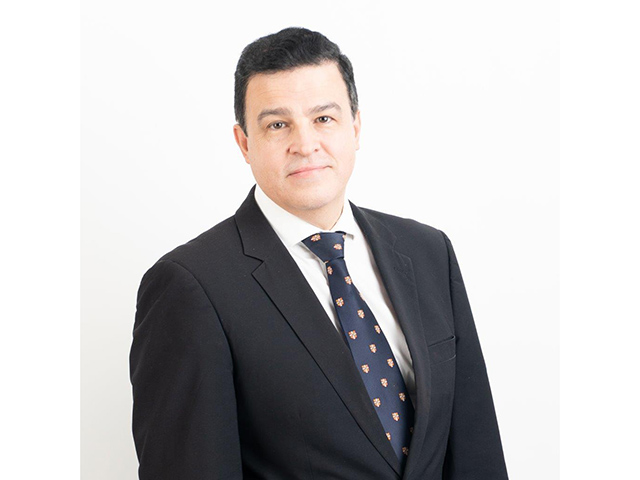Why sixteen is the crucial age to encourage young women to pursue STEM
By Industry Contributor 7 October 2021 | Categories: feature articles
Features sponsored by Drive Control Corporation with Dell Client Peripherals:
by Juan Visser, Regional Director, Sub-Saharan Africa, Cambridge International
Women have worked on some of the world’s most important scientific discoveries and advances – from our understanding of DNA to the development of the Covid-19 vaccines.
In South Africa, female scientists like Professor Glenda Gray, President and CEO of the South African Medical Research Council (SAMRC) and Linda-Gail Bekker, Deputy Director of the Desmond Tutu HIV Centre, are making waves in what was once considered a male-dominated field - and the work they are doing is changing the research landscape.
However, despite the progress being made, women remain underrepresented in most STEM focused university courses and careers. Evidence suggests that in order to reverse this trend, we need to encourage girls’ interest in STEM around the time they are starting to make choices about their future career paths.
The Move to Further Education
At Cambridge Assessment International Education, we have released new data reinforcing that the run-up to post-16 education is the crucial moment to encourage new generations of female scientists, engineers, programmers, and mathematicians. While male and female students perform equally during Cambridge IGCSEs (International General Certificate of Secondary Education), there remains a disconnect between what they choose to study post-16.
Since 2008, entries at IGCSE from South Africa female students has gone up from 41% to 47% of the total entries. Globally, nearly two-thirds of male and female students take STEM courses at Cambridge IGCSE. Yet, at Cambridge International A Level, when many have the choice of which three or four subjects, they want to focus their studies on, we see quite a drop in the number of STEM subject entries by women. Many female students choose to focus on other A Level subjects, while the proportion of male students studying STEM remains steady. The situation does vary country to country, but the international outlook shows there is still a way to go before young women pursue STEM A Levels in equal numbers to young men.
Better Representation
The past year has shown us more than ever before, the huge importance of having a global workforce of well-qualified experts working in scientific and mathematical fields. As the Covid-19 pandemic swept across the world, we have all depended heavily upon these experts to treat those falling ill from the virus; to map the spread of the virus; to analyse how it affects individuals of different ages and different ethnicity; to develop vaccines; and to monitor new variants, amongst other things. We must continue to attract the best minds to study maths and science beyond IGCSE, regardless of gender.
Encouragingly, female representation is improving year on year, pointing to a bright future for the global workforce. More than 9 800 girls have taken STEM IGCSEs/O-levels in South Africa since 2009. Since 2009, there have been 20,300 entries from girls in STEM IGCSEs. This could suggest that on average, each female student takes two STEM courses. However, we mustn’t be lulled into a false sense of security. There’s still work to be done before we get to the stage where the numbers of both genders studying science and maths subjects at higher education and university level achieve parity.
Ensuring STEM Syllabuses are Interesting and Balanced
We recognise that the content of our syllabuses plays an important part in whether young people choose to continue studying particular subjects beyond IGCSE. Designing interesting maths and science syllabuses, which incorporate a range of topics that can be explored in depth at A Level and help students to develop core skills, is really important if we want to encourage more young people, across both genders, to study STEM courses beyond 16, and attract them into STEM careers.
Making choices about what to study post 16, is often the first point at which young women feel empowered to choose a STEM pathway, as the right courses offer a rewarding mix of challenge and satisfaction. Since 2009, there have been more than two million entries from young women across the world for Cambridge IGCSE STEM courses, and they represent about 30% of total entries across all subjects. Rigorous IGCSE and A Level courses and globally recognised assessments help prepare students for bright careers in science and mathematics.
Success for All
At Cambridge International we recognise there is still a gap between the number of female students taking STEM courses post 16, and their male peers. It is therefore vital that we continue to do everything we can to break down any long-standing stereotypes associated with STEM subjects at A Level and encourage more young women to choose these subjects.
We can do this in many ways, from recognising and rewarding young scientists; encouraging work experience placements in STEM fields; promoting the work of successful women scientists and mathematicians; and by ensuring STEM qualifications remain interesting, relevant and an attractive choice for all students regardless of their gender.
Most Read Articles

Have Your Say
What new tech or developments are you most anticipating this year?



.gif)
